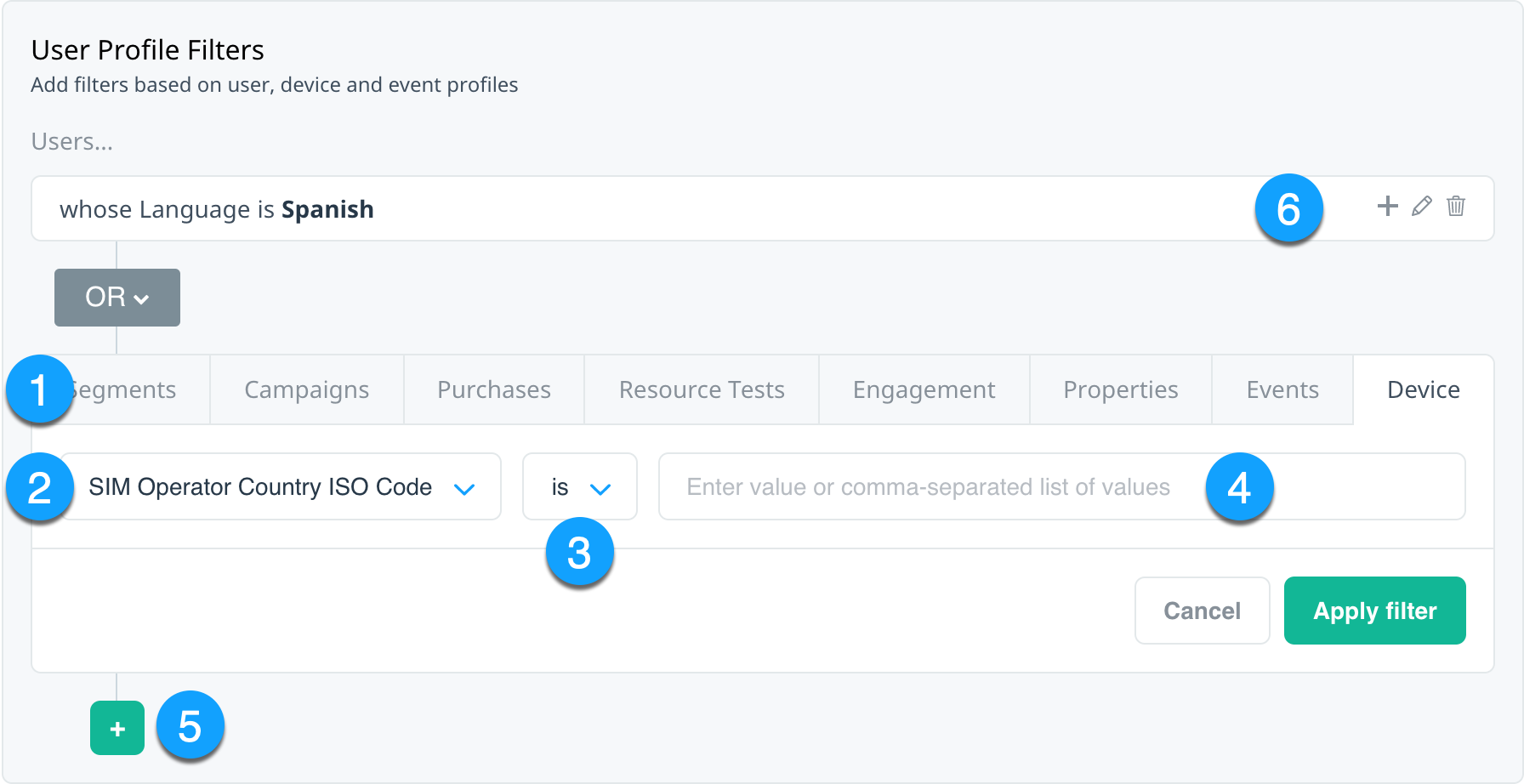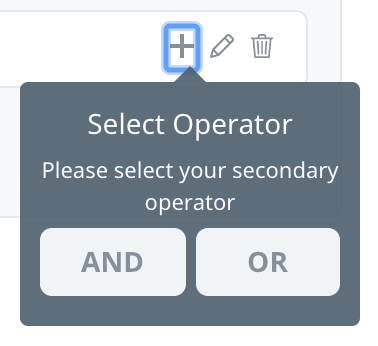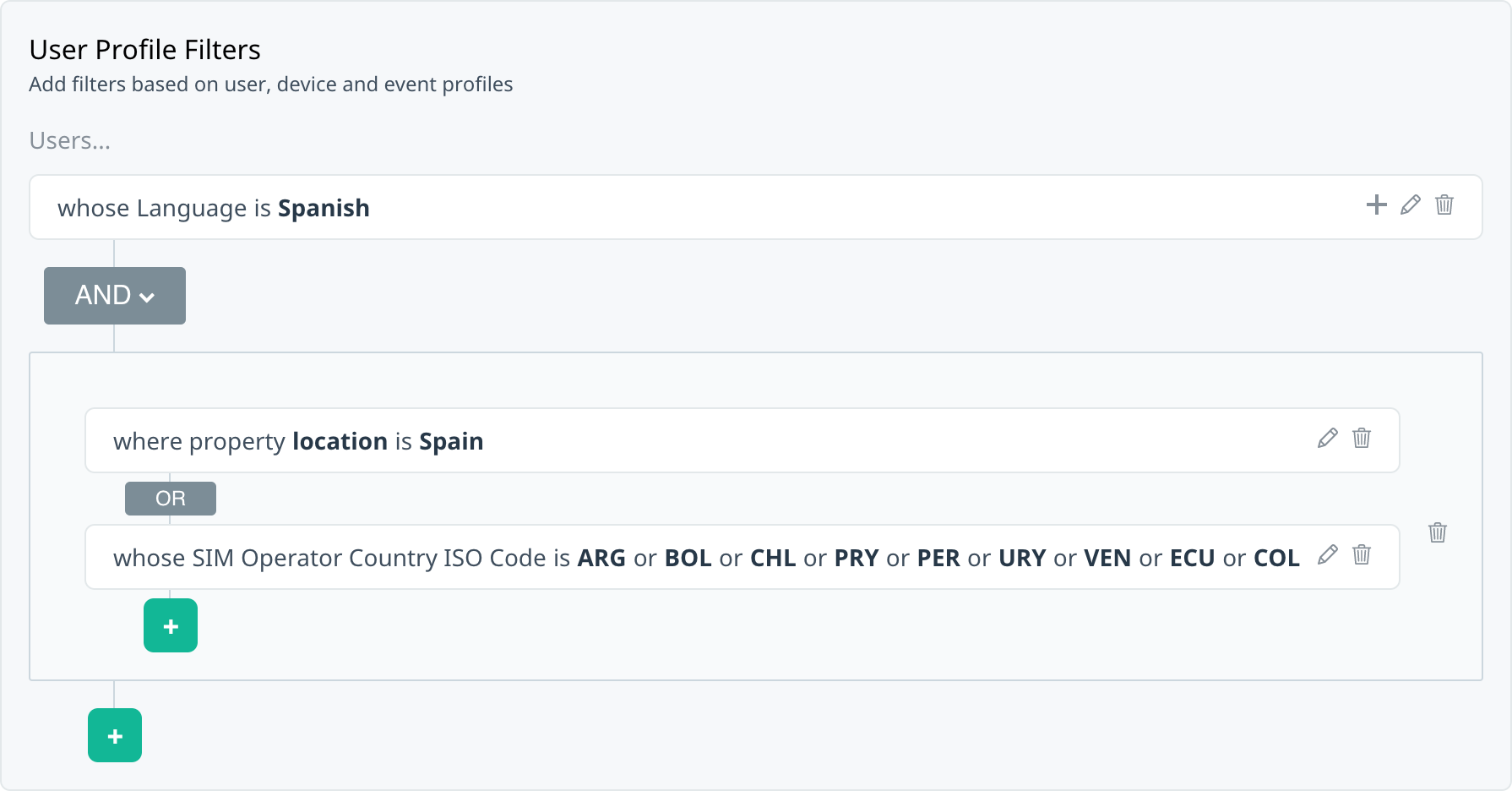Creating segments
Creating segments involves applying one or more filters to your users based on criteria such as their purchases or device data. For example, you can filter on purchase properties (such as the number of in-app purchases), device properties (such as language), and engagement (such as the total session minutes).
Creating a segment
Create segments that are as simple or complex as needed using any combination of data type, filters, and operators available. The segment builder includes the following elements:
| Element | Description | |
|---|---|---|
| 1 | data type | The type of user profile data you want to use to filter your segment. |
| 2 | available filters | Depending on the type of data, the filters available to use to create your segment. |
| 3 | operators | Depending on the type of filter, the operators that are available for filtering your segment. |
| 4 | filter values | The value you want to use to filter your segment. Depending on the type of operator or filter value (for example, string, integer, date), either enter the value directly in the box or select it from a list. |
| 5 | Add a new filter | Use the AND/OR conditions to add additional primary filters and create basic or advanced combinations of filters. |
| 6 | filter summary | After you apply a filter definition, use the options on the summary to add (+) a secondary filter within the same group, edit the filter, or delete the filter. |
To create a segment:
Step 1: On the Manage menu, select Segments.
Step 2: On the Segments screen, select Create Segment.
Step 3: Enter the Name of the segment.
Step 4: Create your filter based on the available data types (for example, Purchases, Events, Device), operators, and values provided. For detailed information on the data types and filter descriptions, see Segment and audience filters.
- Select the type of data on which you want to base your filter.
- Create the filter using the filter type, operator, and value fields provided (for examples, see below). To include multiple values in a filter, select or enter the additional values in the value box.
- Select Apply filter to add your filter. The segment definition displays a summary of the filters as you add them.
- Optionally, to create more complex filters, use secondary filters to apply additional constraints within one group.
- To add another group of filters to your segment, select Add a new filter and then select the primary operator you want to use.

- Repeat steps 1 to 3 above for every additional filter.
Step 5: After you’ve added all required filters, select Save Segment to save your segment.
Basic vs. advanced segments
Depending on your comfort level with AND/OR logic, use the primary and secondary filter operators to create segments that are as basic or advanced as needed.
Basic filters
To create basic filters where users must match all or any of the selected criteria to qualify for the segment, add a primary operator to your filter definition. If your primary operator is:
- AND – targeted users must match all of the selected filters (for example, language is French AND location is France).
- OR – targeted users can match any of the selected filters (for example, language is French OR location is France).
Advanced filters
To create more complex filters, use the secondary filter to combine groups of AND/OR filters in different configurations. The primary operator determines the AND/OR logic you can use within the group. If your primary operator is:
- AND – targeted users must match all of the selected filter groups. Within each group, you can specify additional OR filters.
- OR – targeted users can match any of the selected filter groups. Within each group, you can specify additional AND filters.
Examples
The following examples illustrate how to use the data type, filter types, and operators provided to create various segments.
Users who have spent less than $10
| Data Type | Filter Type | Operator | Value |
|---|---|---|---|
| Purchases | have spent | less than | 10 |
Segment for multiple language groups
Swrve provides an OR condition to enable you to associate multiple values with the same operator. Simply enter the additional values in the property value box.
| Data Type | Filter Type | Operator | Value |
|---|---|---|---|
| Device | Language | is | English OR French |
Users who haven’t used the app much or purchased a premium subscription
Select OR as your primary operator and then add a second filter.
| Data Type | Filter Type | Operator | Value |
|---|---|---|---|
| Engagement | have used the app | less than | 5 times |
| Purchases | haven’t purchased particular item(s) | N/A | relevant item; for example, Premium |
You can also target and track your audience based on the recency of custom events or purchases. For more information, see How do I target my audience using event recency?
Next steps
Use segments to target your resource A/B tests or campaign audiences. For more information, select one of the links below:



